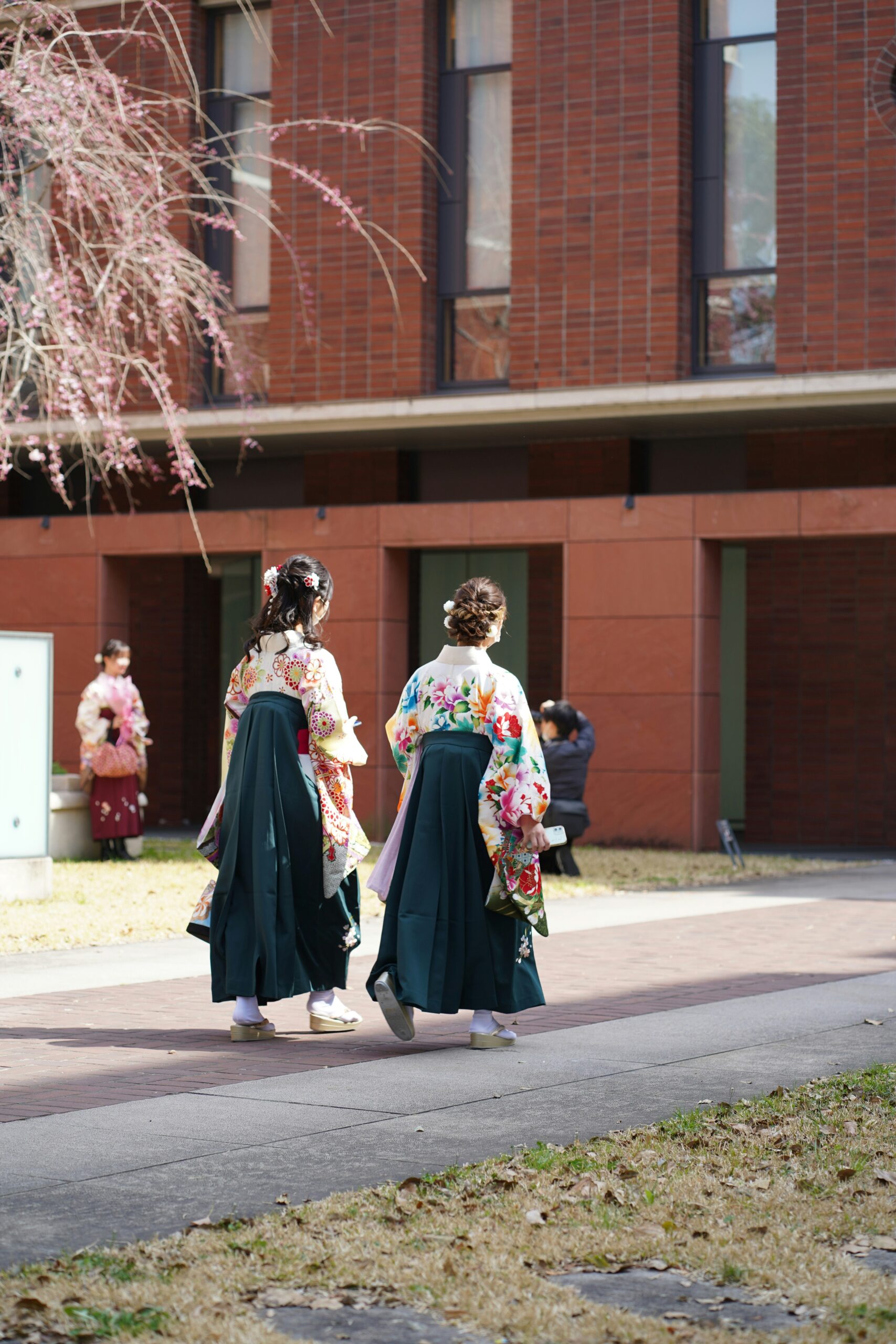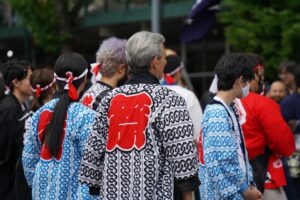In the rich tapestry of Japanese culture, the hakama holds a special place, embodying both the elegance and the enduring traditions of a nation with a history that stretches back millennia. This traditional garment, with its deep roots and complex significance, continues to capture the imagination of both the Japanese and the global audience. Through exploring the splendor of the hakama, we embark on a journey that transcends mere fashion, delving into the heart of Japanese heritage and its ongoing dialogue with the modern world.
Unveiling the Splendor of Japan’s Hakama
The hakama is a traditional Japanese garment, characterized by its wide legs and pleated design. Originally worn by the samurai class, it has evolved over centuries to become a symbol of Japanese culture and dignity. The garment’s flowing form allows for ease of movement, making it both practical and aesthetically pleasing. The elegance of the hakama lies not just in its appearance but also in the meticulous craftsmanship that goes into each piece, a testament to Japan’s rich tradition of textile artistry.
A Journey Through Time: The History of Hakama
Tracing its origins back to the Heian period (794-1185), the hakama was initially a garment worn by the aristocracy, symbolizing status and authority. Over the centuries, it became integrated into the attire of samurai and martial artists, embodying the virtues of honor and discipline. The transformation of the hakama throughout the ages mirrors the shifts in Japanese society, from the feudal era to the modern day, reflecting changes in social hierarchies, fashion, and functionality.
Decoding the Types: Various Hakama Styles Unraveled
The hakama comes in various styles, each with its own significance and occasion for wear. The most common types are the divided "umanori" (horse-riding hakama) and the undivided "andon bakama" (lantern hakama). The umanori type is favored in martial arts for its flexibility and ease of movement, while the andon bakama is often worn by Shinto priests and in formal ceremonies. The diversity of hakama styles showcases the adaptability of this garment to different aspects of Japanese life and ritual.
The Symbolism Behind the Hakama’s Design
Every aspect of the hakama’s design is imbued with meaning. The garment traditionally features five pleats in the front and two in the back, which symbolize the seven virtues of bushido: integrity, courage, benevolence, respect, honesty, honor, and loyalty. Wearing the hakama is thus a reminder of these ideals, deeply rooting the wearer in a tradition that values moral character above all.
Mastering the Art: The Traditional Way to Wear Hakama
Putting on a hakama is an art form in itself, involving precise steps to ensure the garment is worn correctly. The process begins with stepping into the hakama, tying the front straps around the waist, and adjusting the back plate. The back straps are then brought forward and tied in a specific manner that secures the hakama while allowing for movement. Learning to wear the hakama properly is a rite of passage in many traditional arts, symbolizing a deeper understanding and respect for Japanese culture.
Hakama in Martial Arts: More Than Just Attire
In the realm of martial arts, the hakama is more than just a piece of clothing; it is a symbol of expertise and progression. Practitioners of disciplines such as kendo, aikido, and kyudo wear the hakama as a sign of their skill and dedication. The garment not only serves a practical purpose in allowing freedom of movement but also instills a sense of tradition and respect for the art’s lineage.
The Role of Hakama in Japanese Weddings
In traditional Japanese weddings, the hakama plays a pivotal role, particularly for the groom. It is common for the groom to wear a formal black or dark blue hakama paired with a montsuki haori (a formal jacket with family crests). This attire symbolizes the groom’s readiness to become a responsible member of society and his commitment to upholding the virtues represented by the garment.
Women and Hakama: Breaking Stereotypes
Historically, the hakama was predominantly worn by men, but in recent times, women have embraced the garment, breaking gender stereotypes and redefining traditional fashion norms. Female students at graduation ceremonies, practitioners of martial arts, and participants in traditional festivals are increasingly seen wearing hakama, showcasing its versatility and universal appeal.
From Samurai to Students: The Evolution of Hakama
The hakama’s journey from the battlefields to the classrooms of Japan illustrates its remarkable evolution. Once a symbol of the samurai’s authority and martial prowess, it has transformed into a garment worn by students during graduation ceremonies, symbolizing their transition and readiness to face the world. This evolution reflects the changing roles and meanings of traditional attire in contemporary Japanese society.
Crafting Elegance: The Expertise Behind Hakama Making
The creation of a hakama is a labor of love and expertise, involving intricate patterns, precise measurements, and a deep understanding of the fabric’s flow. Artisans who specialize in hakama-making employ techniques passed down through generations, ensuring that each garment is a masterpiece of functionality, beauty, and tradition. The meticulous process underscores the value placed on preserving the craftsmanship and heritage of traditional Japanese attire.
Hakama in the Modern World: A Tradition Reimagined
In today’s fast-paced world, the hakama has found new expressions, blending traditional aesthetics with contemporary fashion. Designers have reimagined the hakama, creating variations that fit seamlessly into modern wardrobes while retaining the essence of its heritage. This fusion of old and new demonstrates the dynamic nature of Japanese culture and its ability to innovate while honoring its past.
Preserving the Legacy: The Future of Hakama in Japan
As Japan continues to navigate the balance between tradition and modernity, the hakama stands as a symbol of cultural endurance and adaptability. Efforts to preserve the garment’s legacy, through educational programs, artisan workshops, and cultural initiatives, ensure that the hakama will remain an integral part of Japan’s cultural identity. The future of the hakama in Japan looks promising, as it continues to inspire and adapt, bridging generations and cultures.
The hakama, with its deep historical roots and profound cultural significance, remains a cornerstone of Japanese tradition. As we have explored its various aspects, from its origins and symbolism to its modern adaptations, it becomes clear that the hakama is more than just a garment. It is a living legacy, a canvas on which the story of Japan is etched. In preserving and reimagining this traditional attire, Japan celebrates its past while weaving the fabric of its future, ensuring that the elegance and spirit of the hakama continue to flourish for generations to come.




